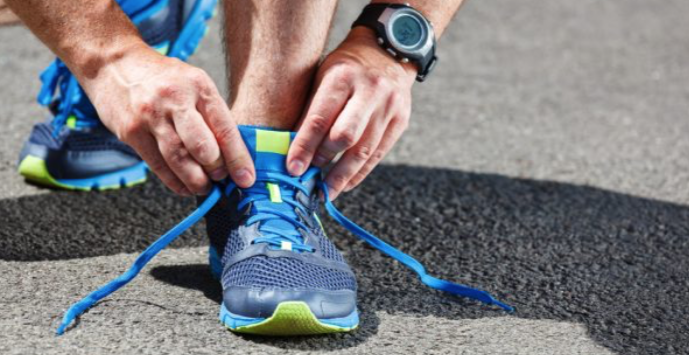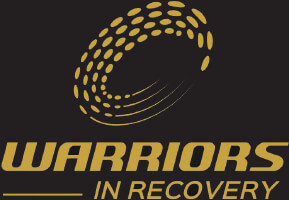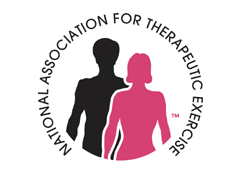
All of you who like getting injured, please raise your hands.
Right. No one does.
If you’re an athlete, then you’re always on the edge of getting hurt. Life beats us up and because you play sports it comes with the territory. So unless you have a big “S” on your blue undershirt right now, then you need to read this blog entry.
So why do most people wait so long before doing something about their discomfort and pain? I suspect it’s because most people think of pain as “bad” or “abnormal”. I’ve had clients tell me that they expect to never hurt; that they should be able to do whatever they want and never have an ache or pain.
Our conversation usually goes something like this…
Client: “All I was doing was tossing my laptop case into the back seat of my car the other day and –wham! – I guess that did something to my back and now, my back won’t stop hurting”
Me: “I see. And when did all this happen? When did you toss your bag?”
Client: “Well, I guess it happened about 3 or 4 months ago…it’s used to only bother me a little bit, but now the pain is all the time. Who would have thought that something so simple as tossing a laptop case could throw your back out, huh?”
Me: “Yes, but that’s not really the case here. Actually, tossing your bag is more like the straw that broke the camel’s back”
Client: “So, you’re saying that my tossing the bag had nothing to do with it? I never had this pain until I did that.”
Me: “Yes, let me explain.”
And at this point in the conversation, I explain how the paradigm has shifted – that some movement limitations and discomforts are not OK. More is not OK. Not doom and gloom. Just that we all need to be more proactive when it comes to taking care of our bodies and noticing when our “check engine” lights are flickering on the dashboard (my clients all know my auto comparisons well).
Pain is sometimes referred to as the fifth vital sign. Vital signs – blood pressure, heart rate, respiratory rate, and body temperature – are indicators of your body’s function. But, they have to be interpreted within a certain context and not ignored.
For example, if I take your heart rate and it’s 135 beats per minute (BPM), without knowing why your heart rate might be that high, I could arrive at a false conclusion. If you said that you had just run up three flights of stairs, then a heart rate of 135BPM seems reasonable. If however, you had just walked in to my office and your resting heart rate was 135 BPM, I would be much more concerned.
Pain requires the same kind of interpretation. And the general rule is this (and I’m speaking of musculoskeletal aches and pains): if the pain alters your ability to function, then you should stop the activity and monitor your symptoms closely for 48-72 hours. If the symptoms are still present and your function is still compromised, it’s time to get help.

Let’s look at two scenarios…You go for a run and notice some pain in your knee afterward. It’s mild but something you’ve not had before. You can walk fine, get up and down from a chair, and climb stairs okay. But, you’re wondering if you should run or not; should you ice the area? Take Advil?
Instead of ice or Advil, you decide to wait and watch. The next day, you feel okay but choose not to run for a few more days. You go out after four days of not running, and complete your usual 3 mile run. To your surprise, you feel great. And this continues through the next day and the next day, you still feel fine every time you run. No more pain or discomfort when you run.
Contrast with a slightly different scenario…You go out for a run, notice knee pain afterward and just shrug it off as “over doing it”. You have a run scheduled with a friend the next day and are determined to do it. After all, you feel fine now walking around, going up and down stairs.
The next morning, you meet your friend and take off together for a 3 mile run. Then 10 minutes into the run, you notice that your knee hurts again. And by the end of the run, you notice it even hurts a little to walk. But, by the time you get home, walking is okay.
So, the next day you go out for a run and now you hurt almost as soon as you start running. And you have to stop. And walking hurts. And stairs hurt. Get my drift???
Two different outcomes from two different choices here.
So, in your enthusiasm to get healthy and fit this 2017, when you go full tilt and hurt some joint or muscle or tendon…think wisely before you choose to keep going anyway. It’s at that moment in your choice to keep going and to “tough it out” that your problems will begin to escalate.
The truth is, at some point in your life, you going to experience pain. Like I stated earlier….Life beats us daily. When you play sports, then it comes with the territory. When you do have pain, look at it as a “check engine” light coming on in your car. Then ask yourself, should I REALLY be ignoring this?
Cheers, drock

Want to learn more about improving your functional movement and sports performance? Then follow Dianne’s blog: https://dtasmblog.wordpress.com
Dianne Rockefeller is a Licensed Massage Therapist, National Academy of Sports Medicine – Certified Personal Trainer, Certified Orthopedic Manual Therapist, Certified Myoskeletal Therapist, Certified Kinesio Taping Practitioner, Certified Cupping Therapist, and Muscle Activation Techniques Practioner (MAT). She has treated athletes of all levels, from youth to professional, from all sports. She brings a very unique perspective to manual therapy utilizing her experience with motion analysis and sport. Her blend of advanced integrated skills along with practical and rehabilitation experience deliver exceptional results. Dianne is a self-proclaimed scholar of “Applied Performance Manual Therapies”. Contact Dianne at drock@dtasm.com or 210-973-4848.







